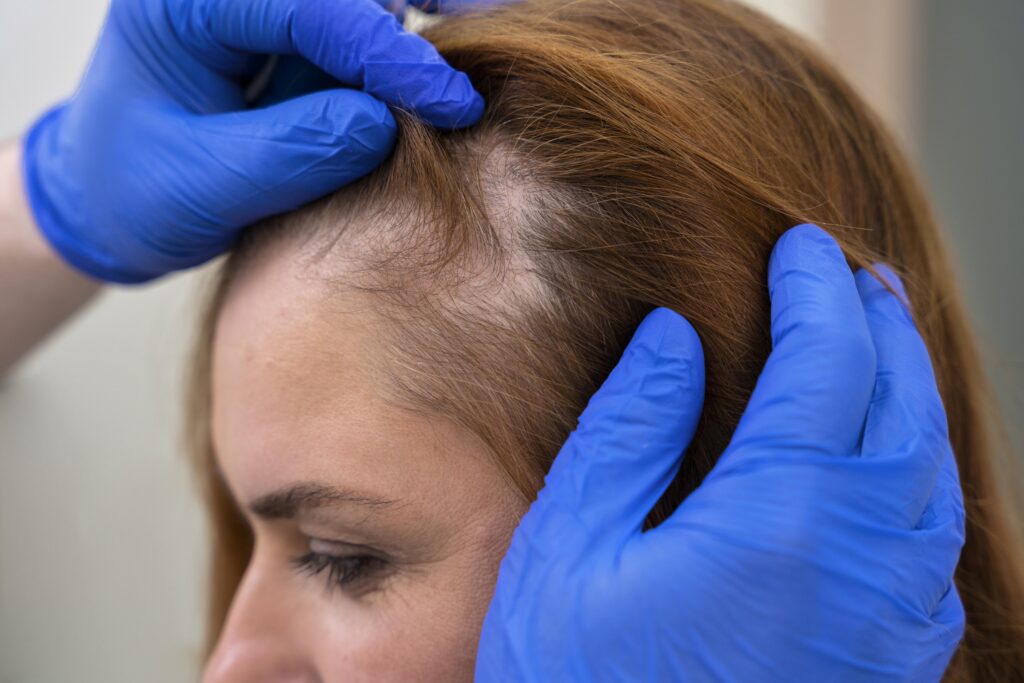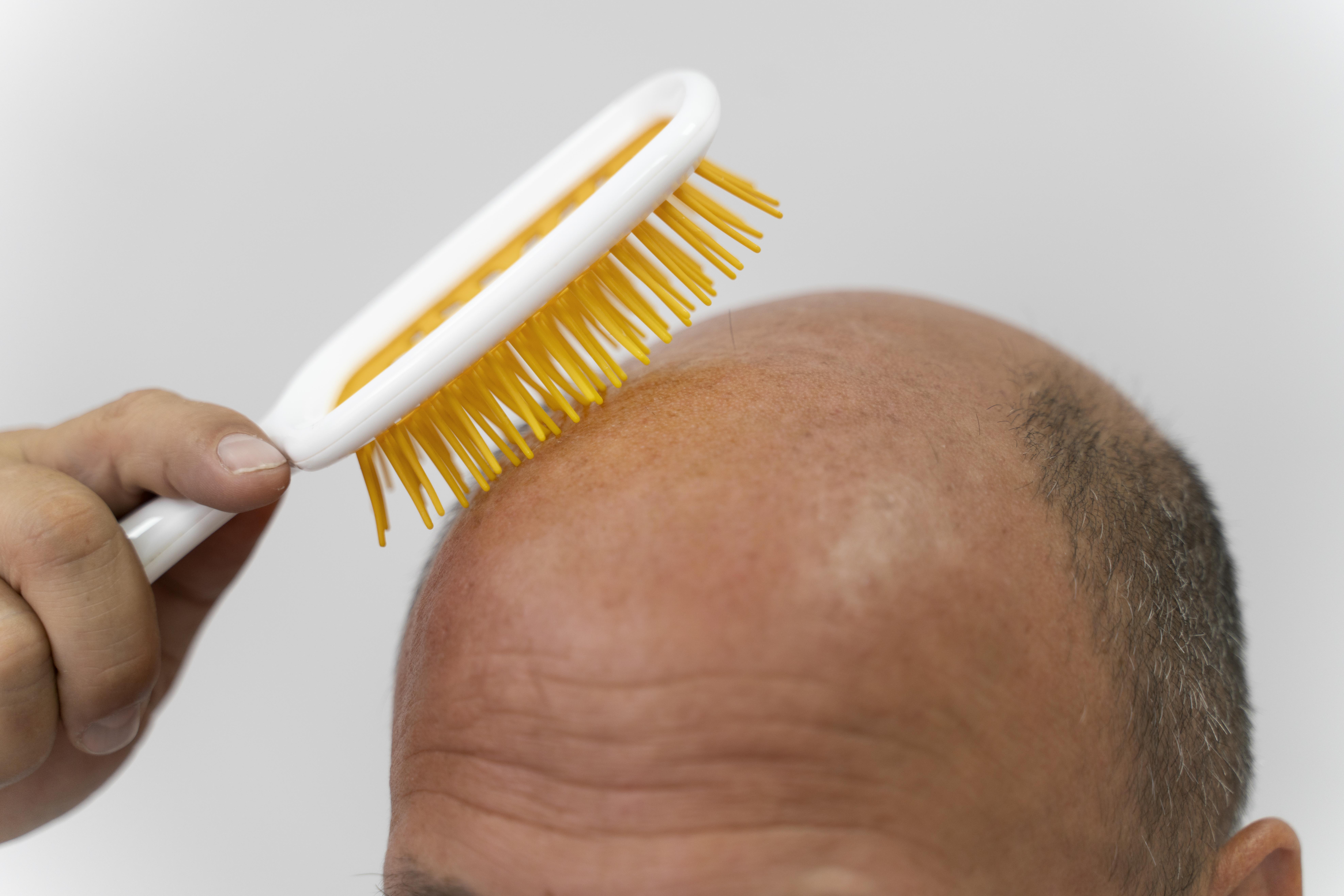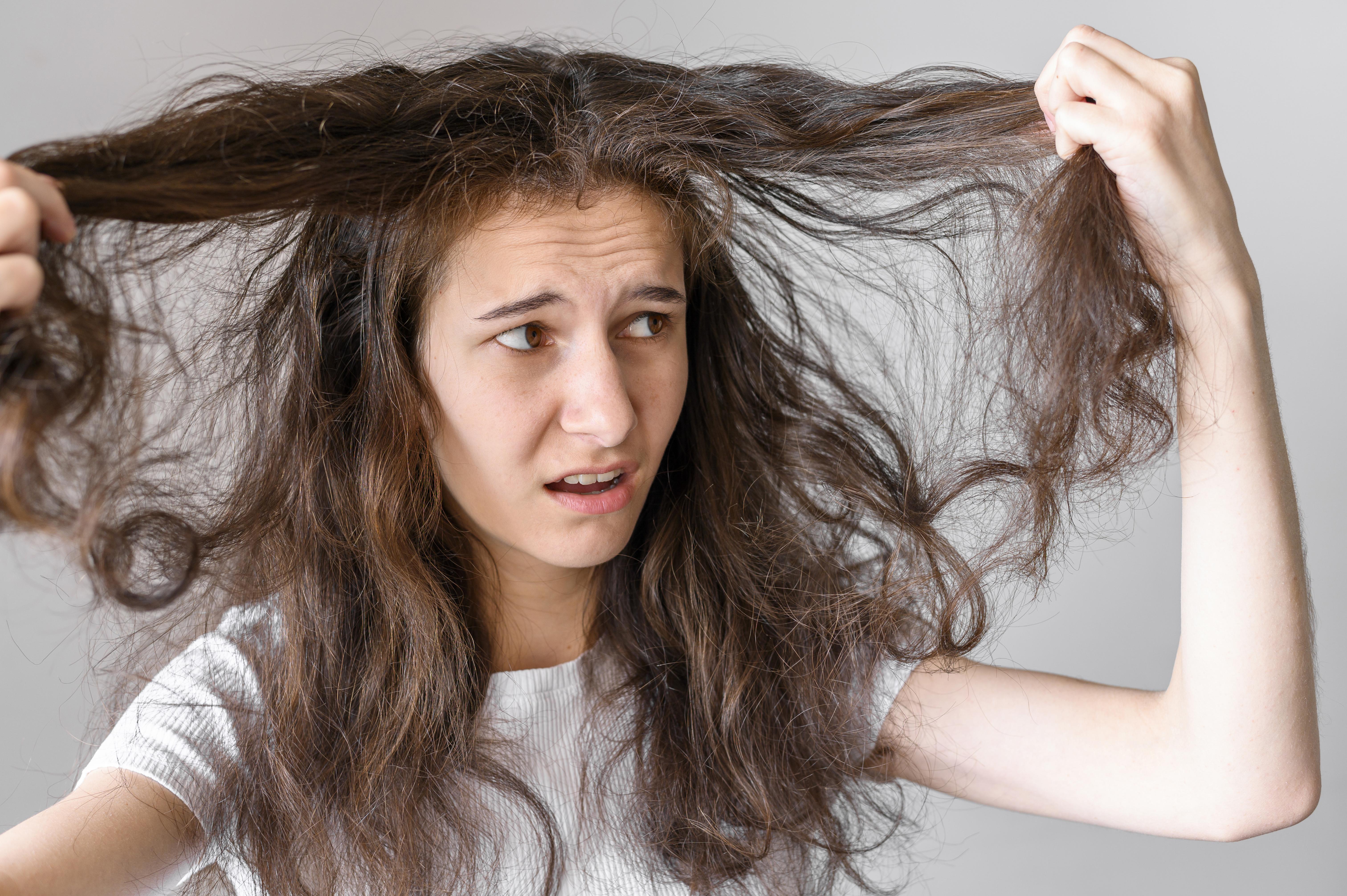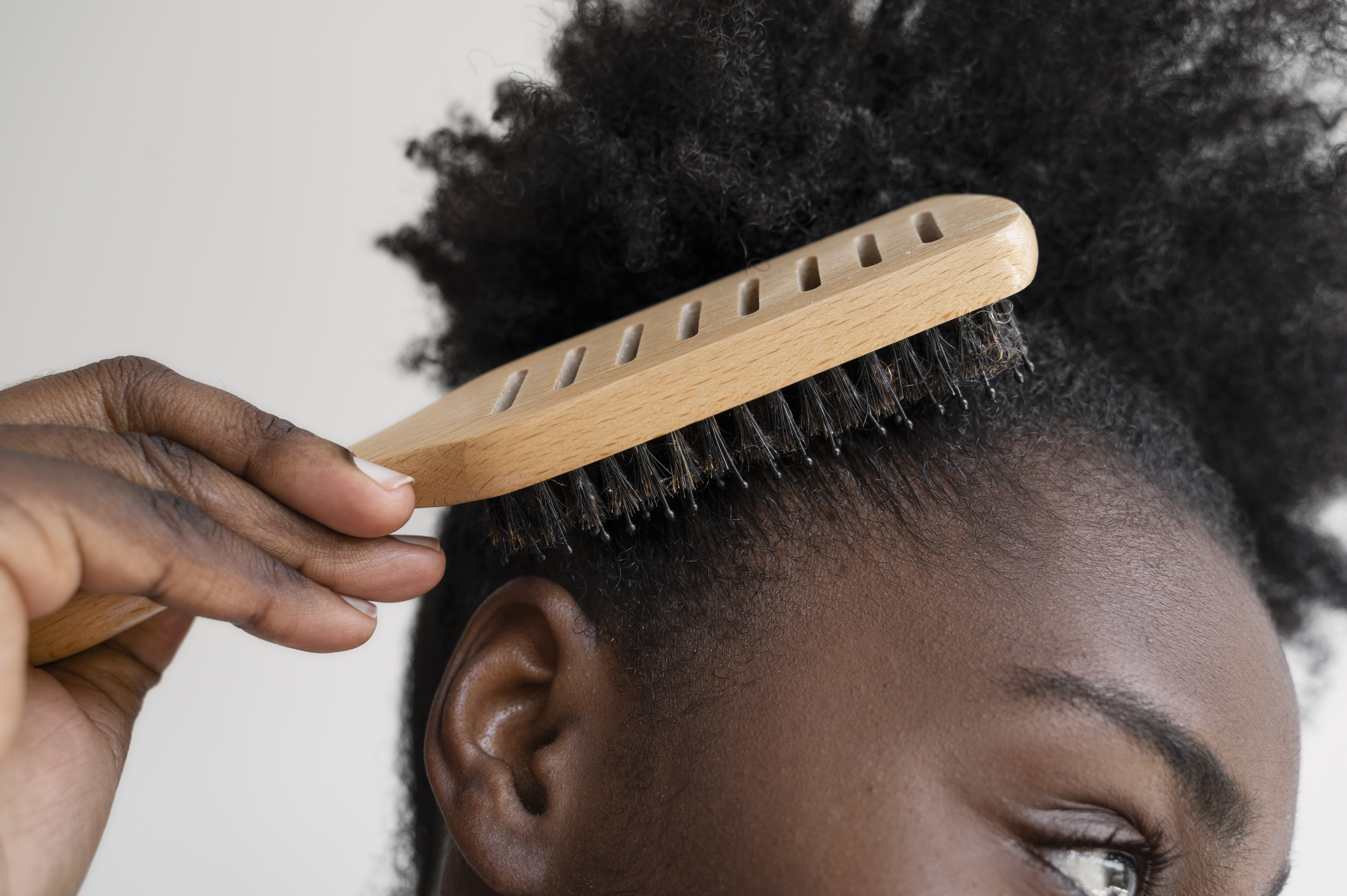
Hair loss and thinning edges are common issues that affect individuals of all ages, genders, and ethnicities. It can profoundly impact someone’s self-esteem and confidence. I once had a friend who had some hair loss issues. Boy, it wasn’t a very easy time for me as I was always saddled with the responsibility of being a ‘motivational speaker’. It was always difficult to convince her that she was still beautiful and that her hair did not define her true self. My entire pep talk was not always convincing enough.
Our society often emphasizes physical appearance, and hair is a significant part of that. Losing hair, particularly in a noticeable area like the edges, can make individuals lose confidence, feel self-conscious, and feel less attractive. It may cause feelings of insecurity, embarrassment, and even depression. Hair loss can also trigger concerns about aging prematurely or feeling less feminine.

Hair loss, medically known as alopecia, is a condition that can manifest in various forms, including thinning of the hair, bald patches, receding hairlines, and shedding. When any of these happens to your hair, it calls for attention. Hair shedding, though, is normal and natural. On average, individuals shed up to 50 or more strands of hair every day. While this is true, excessive shedding can indicate an underlying issue.
Hair loss can affect any hair type, whether type 1, 2, 3, or 4. However, due to the fragile nature of type 4 hair (coily hair), it becomes more susceptible to these issues. This is why any product that promises hair and edge restoration is always a fast-selling product among coily hair individuals.
Despite the prevalence of these issues, there is still hope of restoring your hair’s lost glory.
Yippie! But first, let’s examine the causes of hair loss before discussing practical tips and treatments for combating it.
Causes of Hair loss and Thinning Edges

Harmful Hair Practices
Bad hair practices cause most hair loss issues. The way you handle your hair will always show in how it appears. This is why I tell people that proper hair care is a very rewarding experience. It will always reflect in the way your hair looks. Harmful practices like making very tight hairstyles, using the wrong hair tools, using gels and other hair sprays incorrectly, using poor detangling methods, and exposure to harmful chemicals, amongst others, can result in hair loss and thinning.
Chemical Damage
Many black women use chemical relaxers and straighteners to alter the texture of their hair. However, frequent exposure to these harsh chemicals can weaken the hair shaft and cause breakage, thinning, and loss of edges. Improper application or leaving chemical treatments on for too long can damage the scalp and hair follicles. Opt for safe products and treatments that do not pose any threat to your hair’s health.
Hormonal Changes
Have you noticed that some women lose so much hair after childbirth (postpartum hair loss)? The same thing happens to others during pregnancy or menopause. They tend to experience more shedding, thinning, and bald edges. This is caused by fluctuations in hormone levels, which can disrupt the hair growth cycle and result in temporary hair loss. Estrogen, progesterone, and testosterone play crucial roles in maintaining healthy hair follicles, and imbalances can lead to shedding and thinning.
If you are currently at any of these stages in your life, you can prepare adequately by observing a good hair care routine to ensure your hair is not so badly affected, as well as helping with fast recovery.
Genetics
Another cause of hair loss is genetic predisposition. If your family members have a history of hair loss or thinning edges, you’re more likely to experience it too. If you have noticed a pattern of hair loss in your family, make sure to put in extra effort to help your hair.
Stress
Stress can also cause hair loss. Chronic stress disrupts the normal hair growth cycle by triggering a condition called telogen effluvium, in which many hair follicles enter the resting phase simultaneously, causing shedding.
Medical Conditions
Certain medical conditions and treatments can cause hair loss. Examples include Cancer treatments like chemotherapy, scalp infections, thyroid disorders (hypothyroidism and hyperthyroidism), and autoimmune diseases.
Age
Have you ever heard older people talk about how beautiful, full, and long their hair was? When you look at their current hair, the story and reality are impossible to reconcile. The reason for this is Age. As time passes and people age, the rate of hair growth slows down, and the hair follicles may shrink, resulting in thinner and weaker hair.
Unhealthy Lifestyle Habits
Smoking, excessive alcohol consumption, and poor diet can negatively impact overall health, including hair health. Smoking, for example, restricts blood flow to the hair follicles, while a diet lacking in essential nutrients can weaken hair strands.
Medications
Certain medications, such as those used to treat cancer, high blood pressure, depression, and heart disease, can cause hair loss as a side effect.
Nutritional Deficiencies
Inadequate intake of essential nutrients, such as iron, protein, vitamins (especially biotin and vitamin D), and minerals like zinc, can impact hair health and lead to thinning.
Solutions to Hair loss and Thinning Edges

While dealing with hair loss and thinning edges can be challenging, several strategies and treatments are available to promote hair growth and restore confidence.
Gentle Hair Care Practices
Since most hair loss issues result from bad hair practices, learning to handle natural hair properly is key to combating hair loss. Avoid hairstyles that exert excessive tension on the hairline, such as tight braids, ponytails, and extensions. Opt for looser styles and use gentle hair accessories like satin scrunchies or hair clips. Additionally, minimize the use of heat styling tools and harsh chemicals, and choose products specifically formulated for damaged or thinning hair.
Consistency in all of these practices, will help you combat hair loss to a reasonable extent.
Scalp Massage
Regular scalp massage can stimulate blood flow to the hair follicles, promoting hair growth and strengthening the roots. Use your fingertips to gently massage the scalp in circular motions, focusing on the edges and other areas of thinning or balding. You can also incorporate essential oils, such as tea tree, peppermint or rosemary oil, known for their hair-stimulating properties.
Protective Styling
Embrace protective hairstyles that minimize manipulation and tension on the hairline while allowing for proper moisture retention and growth. Styles like twists, braids, and bantu knots can help protect the hair and promote length retention. Remember to moisturize and condition regularly to keep the hair healthy and hydrated.
Laser Therapy
Low-level laser therapy (LLLT) devices, such as laser combs or helmets, emit red light to stimulate hair follicles, improve blood flow, and promote hair growth. These devices can be used at home or in a clinical setting under the guidance of a healthcare professional. Handheld laser treatments are also available for home use, following proper instructions provided by the manufacturers. This treatment typically involves regular sessions over a period of time to see results.
Consultation with a Dermatologist or Trichologist

If you are experiencing severe or persistent hair loss, consider seeking professional help from a dermatologist or trichologist. These specialists can assess your scalp health, identify underlying causes of hair loss, and recommend personalized treatment options, such as prescription medications or procedures like platelet-rich plasma (PRP) therapy.
Nutritional Support
You must also maintain a balanced diet rich in vitamins, minerals, and protein to support healthy hair growth from the inside out. Incorporate foods high in iron, zinc, biotin, and omega-3 fatty acids, such as leafy greens, nuts, seeds, fish, and lean meats. Consider taking supplements if you have deficiencies, but consult a healthcare professional before starting any new regimen.
Topical Treatments
Explore topical treatments and products designed to promote hair growth and strengthen the hair follicles. Look for ingredients such as minoxidil, which is FDA-approved for treating hair loss, and natural extracts and oils like rosemary oil, peppermint oil, ginseng, and aloe vera. These ingredients can help nourish the scalp and stimulate hair regrowth.
In conclusion, hair loss and thinning edges may happen to anyone, but they shouldn’t be the end of their hair growth journey. By understanding the causes of these issues, adopting gentle hair care practices, and seeking professional guidance, it is possible to combat hair loss and thinning.
Keep in mind that you need patience, consistency, and a positive mindset to achieve great results. Cheers to a beautiful and thriving hair journey.











